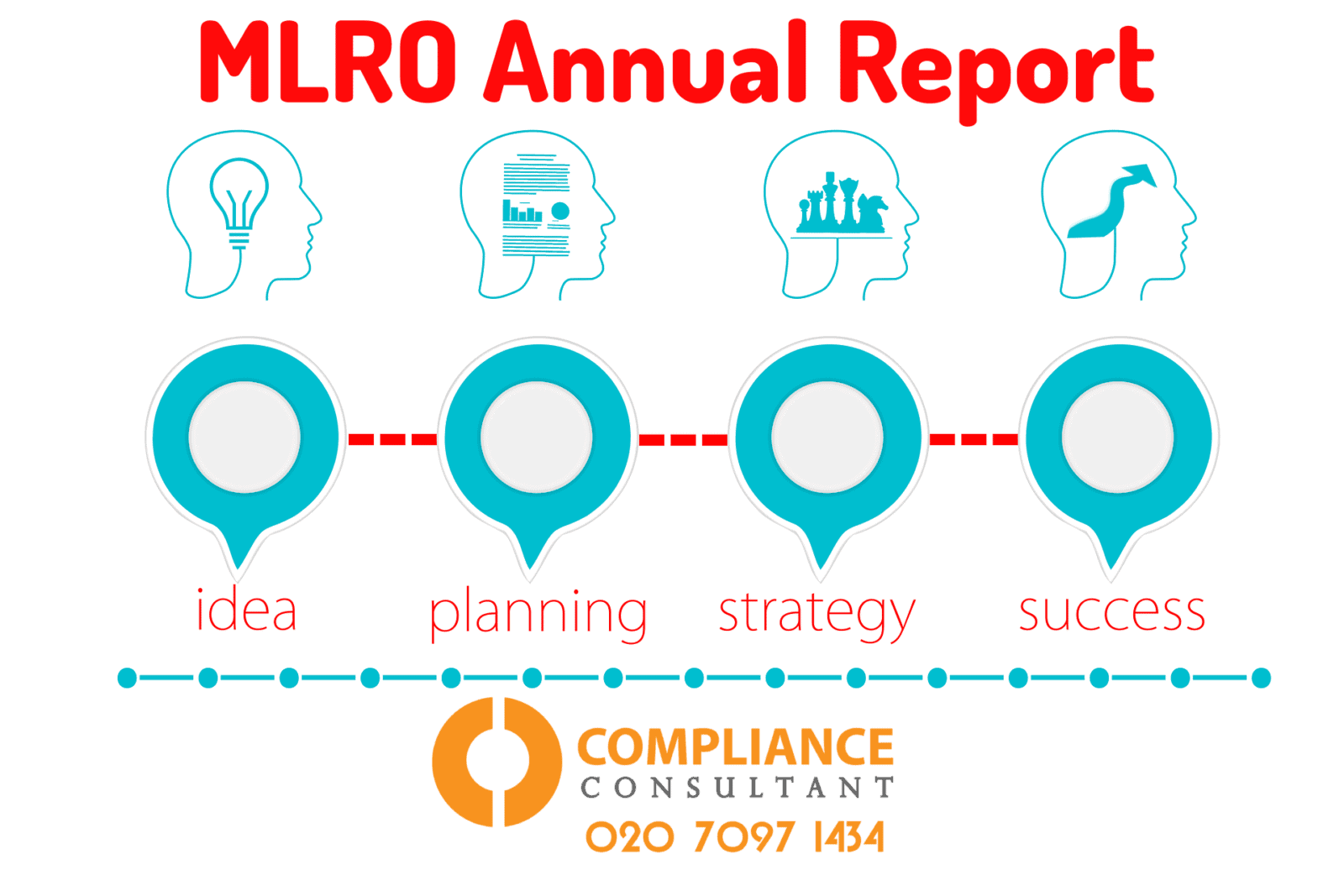FCA MLRO ANNUAL REPORT COMPLETION
The Financial Conduct Authority (FCA) have specific regulatory rules and requirements set out in the ‘Senior Management Arrangements, Systems and Controls (SYSC)’ section of their handbook, which relate to financial crime and specifically anti-money laundering officer, controls, measures and audits. SYSC 6.3.7 also specifies that the appointed Money Laundering Reporting Officer (MLRO) is to ensure the appropriate provision of information to its governing body and senior management, including a report, at least annually, on the operation and effectiveness of the systems and controls put into place to enable it to identify, assess, monitor and manage money laundering risk.
The MLRO has to produce an annual MLRO Report which is provided to Senior Management and made available to any regulating or governing body where applicable and/or requested. The report seeks to ensure the efficiency, effectiveness and adequacy of the AML/CFT measures, controls and systems in place and details any breaches, SAR’s, improvements and actions within the reporting period.
MONEY LAUNDERING REPORTING OFFICER (MLRO) ANNUAL REPORT
NOTE: We have compiled a list of the sections and just a few of the questions that we feel should be included on this annual MLRO Report – however it is essential that you add to and/or amend/expand the sections to ensure that they take into account the size, scope and scale of your business. Some areas have been removed for the sake of brevity. If you want assistance in designing your reports more effectively and comprehensively, lease contact us.
1. Company Details
MLRO Name:
Date Report Compiled:
2. Systems & Controls
a. Are the AML/CFT policy and procedure documents up-to-date? YES/NO
b. Are they adequate to meet the firm’s needs & mitigate financial crime risks? YES/NO
c. Are they effective in meeting the regulatory & legal rules & requirements? YES/NO
d. Detail any areas where the firm’s AML policies, procedures, systems and/or controls should be improved, and proposals for making appropriate improvements?
e. Do the existing controls and measures ensure that your firm can identify, assess, monitor and manage money laundering risk? YES/NO
f. Are client identification procedures effective and adequate? YES/NO
g. Have due diligence checks been completed & retained for all new clients? YES/NO
h. Are your Risk Management policies and procedures up-to-date? YES/NO
i. Are they adequate to meet the firm’s needs & mitigate financial crime risks? YES/NO
j. Are they effective in meeting the regulatory & legal rules & requirements? YES/NO
3. Breaches & Reports
a. How Many Internal Suspicious Activity Reports (SAR’s) Were Completed?
b. Number of SAR’s Passed to the FCA/NCA?
c. Number of SAR’s NOT Passed to the FCA/NCA?
d. Were there any breaches of internal AML/CFT policies and/or procedures? YES/NO
e. Were there any breaches of FCA regulations with regards to AML/CFT? YES/NO
f. Were there any breaches of regulations/laws regarding AML/CFT YES/NO
4. Training & Assessments
a. Has appropriate and effective Financial Crime and AML training been provided to all employees and associated personnel? YES/NO
b. Have all training materials been reviewed for compliance with current laws, regulations and legislation? YES/NO
c. Are employees asked for feedback on the training content and delivery? YES/NO
d. Are assessment test papers used to test AML knowledge and understanding? YES/NO
e. What was the date of the last content update/review for training materials?
f. Have all staff received the training within the past 6 months? YES/NO
5. Due Diligence & High-Risk Clients
a. Is a due diligence checklist and questionnaire used for all new customers? YES/NO
b. Are adequate/effective background checks performed on all new customers? YES/NO
c. Are adequate/effective background checks performed for all new employees? YES/NO
d. How many customers does the firms have that it categorises as ‘high-risk’?
6. Due Diligence & High-Risk Clients
a. Are adequate/effective monitoring and audit procedures and controls in place? YES/NO
b. Based on the audit and monitoring outcomes, are the AML/CFT controls and measures deemed to be comprehensive and proportionate? YES/NO
c. Are transaction monitoring processes adequate and effective? YES/NO
d. Were ‘Source of Funds’ checks carried out on all transactions over £10,000?YES/NO
7. Summary
Do they summarise any regulatory/legislative changes during the reporting period and their impact on the firm’s systems, controls and measures?
Do they summarise any impending and/or future regulatory/legislative changes that could impact the firm’s systems, controls and measures and suggestions for actions and/or mitigations?
Do they indicate changes in activity and elements of the business that have had implications for money laundering controls?
If you need to create, review or execute your Governance, Risk or Compliance strategy, call us today on
0800 689 0190 or email info@complianceconsultant.org.

This guide is only an aide memoire and intended for information only for anyone appraising the documentation needed in an audit/compliance check. It is not to be considered as direct advice or intended to replace specific 1 to 1 engagement with your compliance and risk professional.
Other Posts In This Series
Compliance Audit: What To Look For In Strategy Document
Thoughts on Organisational Charts
Regulatory Complaint Handling & The FCA
Compliance Annual Reporting Requirement
The Importance of Good Management Information (MI)
Directors and/or Partners Responsibilities and Further Training
Compliant Financial Promotions – Advertising
Governance Risk & Compliance Frameworks
Thoughts on Organisational Charts
Regulatory Complaint Handling & The FCA
Compliance Annual Reporting Requirement
The Importance of Good Management Information (MI)
Directors and/or Partners Responsibilities and Further Training
Compliant Financial Promotions – Advertising
Governance Risk & Compliance Frameworks


